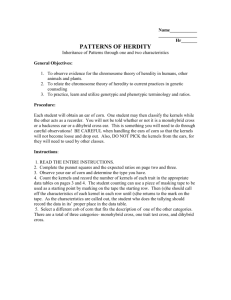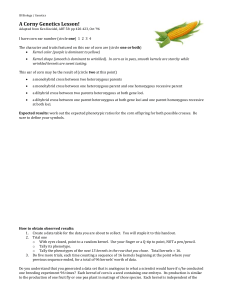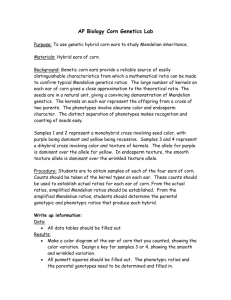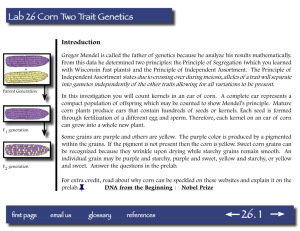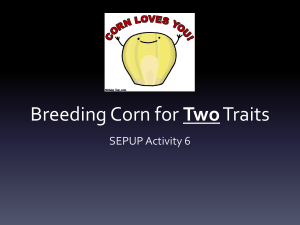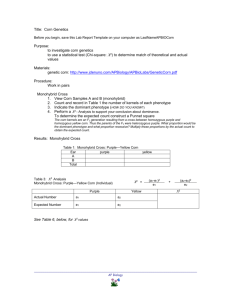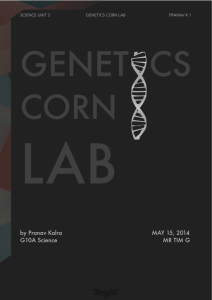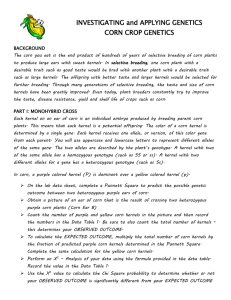Genetic Corn Lab
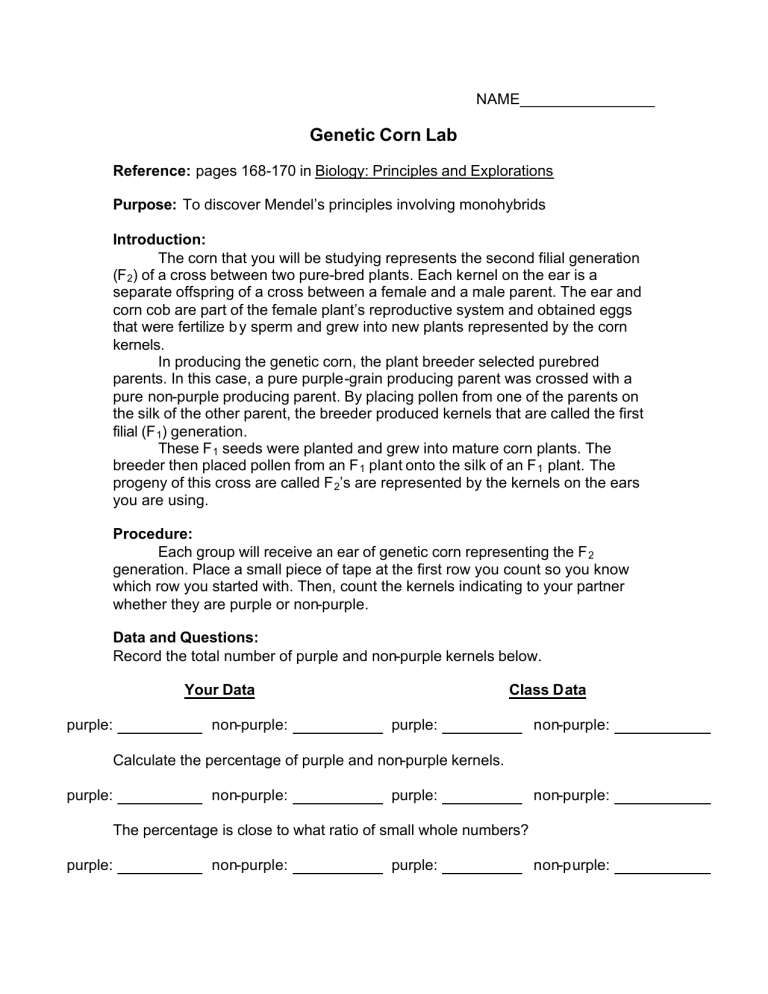
NAME________________
Genetic Corn Lab
Reference: pages 168-170 in Biology: Principles and Explorations
Purpose: To discover Mendel’s principles involving monohybrids
Introduction:
The corn that you will be studying represents the second filial generation
(F
2
) of a cross between two pure-bred plants. Each kernel on the ear is a separate offspring of a cross between a female and a male parent. The ear and corn cob are part of the female plant’s reproductive system and obtained eggs that were fertilize b y sperm and grew into new plants represented by the corn kernels.
In producing the genetic corn, the plant breeder selected purebred parents. In this case, a pure purple-grain producing parent was crossed with a pure non-purple producing parent. By placing pollen from one of the parents on the silk of the other parent, the breeder produced kernels that are called the first filial (F
1
) generation.
These F
1
seeds were planted and grew into mature corn plants. The breeder then placed pollen from an F
1
plant onto the silk of an F
1
plant. The progeny of this cross are called F
2
’s are represented by the kernels on the ears you are using.
Procedure:
Each group will receive an ear of genetic corn representing the F
2 generation. Place a small piece of tape at the first row you count so you know which row you started with. Then, count the kernels indicating to your partner whether they are purple or non-purple.
Data and Questions: purple:
Record the total number of purple and non-purple kernels below.
Your Data Class Data non-purple: purple: non-purple:
Calculate the percentage of purple and non-purple kernels. purple: non-purple: purple: non-purple:
The percentage is close to what ratio of small whole numbers? purple: non-purple: purple: non-purple:
Choose symbols for the purple and non-purple gene. Write them down, and then answer the questions.
1. What is the genotype of the parents that produced the F
2
generation?
2. What is the name of this type of cross?
3. Which color is produced by the dominant gene?
Using a Punnett Square, show the genetic cross that produced the ear of corn that you have.
4. Given the total number of offspring (kernels of corn) on your cob, what ratio of dominant to recessive would you expect and why?
5. Why would the class results be more useful than just your own individual results?
6. Calculate the deviation for your data and the class and compare them.
